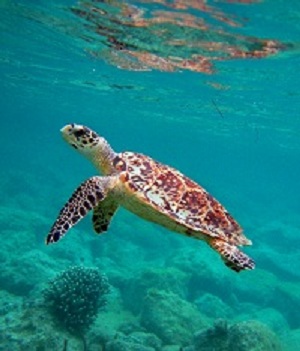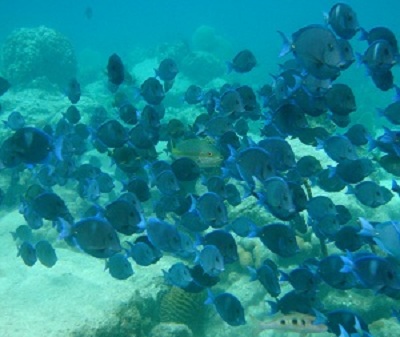Do you share a hobby or a passion with your parents or your children? Of John D. Rockefeller, Jr.'s five sons, his third son Laurance Spelman Rockefeller inherited his father's passion for land protection and nature-related philanthropy. As is the case with many visitors today, Laurance's conservation ethic was influenced by the trips he took to the western national parks with his family as a young man. He followed in his father's footsteps by assisting in the creation of Virgin Islands National Park.

Virgin Islands National Park
NPS Photo
Virgin Islands National Park, renowned throughout the world for its breathtaking beauty, covers approximately half of St. John, as well as nearly all of Hassel Island in the Charlotte Amalie harbor on St. Thomas. Within this protected paradise are sub-tropical forests, semi-arid scrublands, and swamps along the coastal areas. Some 800 species of plants inhabit these varied climates, including one native palm tree - the Teyer palm, along with bay rum trees and tropical orchids. More than 50 species of tropical birds breed on St. John, including the Bananaquit and three species of Caribbean hummingbirds.

Hawksbill over Porites
Photo Credit: Dr. Caroline Rogers, NPS
"St. John was first studied as a possible National Park by the Department of the Interior in the late 1930's. Following World War II, Laurance S. Rockefeller acquired Caneel Bay Estate, a small resort area on the west coast of St. John. In 1954, impressed by the promising possibilities of the island as a Park - reported in a 1939 survey for the Park Service - he led an effort to acquire five thousand acres of St. John to offer the United States for a National Park. The Project was envisioned both as a means of saving the island from haphazard exploitation and to help advance the economy of the Virgin Islands. John D. Rockefeller, Jr. joined his son in making funds available to the Jackson Hole Preserve, Inc., to buy the land. The property was accepted by Congress in 1956 to form the Virgin Islands National Park." (1)
In some ways, the land acquisition on St. John by Laurance Rockefeller indicated a passing of the conservation torch in the Rockefeller family. In Wildlands Philanthropy, author Tom Butler points out that "in recognizing a good conservation opportunity and turning it into reality, it might be said that Laurance had fully become his father's son." (2)

Blue Tangs
Photo Credit: Dr. Caroline Rogers, NPS
-DL
Sources:
(1) Newhall, Nancy. "A Contribution to the Heritage of Every American." New York: Alfred Knopf, 1982.
(2) Butler, Tom. Wildlands Philanthropy: The Great American Tradition. Earth Aware Editions: 2008.
